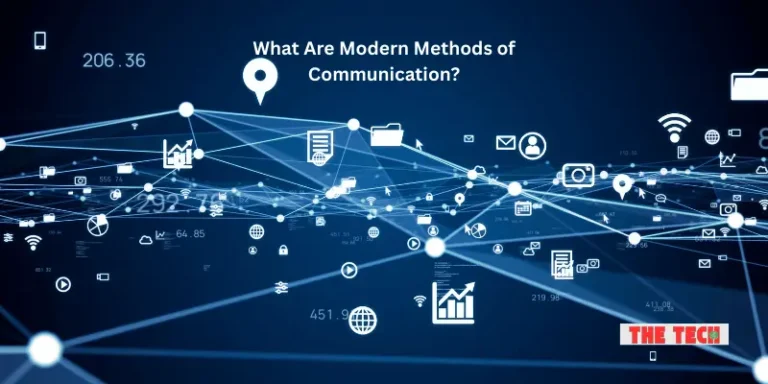In today’s competitive digital world, E-commerce blog monetization is no longer a luxury—it’s a necessity. With millions of publishers generating high-value content, the ability to monetize a blog effectively can be the difference between surviving and thriving in 2025. Whether you’re targeting audiences in the U.S., UK, India, or emerging markets, choosing the right monetization strategy for your e-commerce blog is vital.
In this guide, we’ll explore pain points publishers face in various GEO regions, compare top e-commerce website monetization platforms, and offer proven strategies to monetize your blog traffic smartly.
>>Sign Up as a Publisher – Maximize Your Revenue!<<
Why E-commerce Blog Monetization Is Critical in 2025
Online consumer behavior is shifting. With ad-blocking technology rising and cookie restrictions becoming more stringent, monetizing e-commerce content requires smarter strategies and more advanced platforms than ever before.
Choosing the Right Monetization Platforms
Selecting the best platforms for monetizing your ecommerce website is crucial for success. Each platform has its strengths and fits specific business models. Let’s explore some of the top options:
Shopify
Shopify is a comprehensive ecommerce platform that offers multiple opportunities for monetization. From selling products to integrating apps for affiliate marketing and email marketing, Shopify provides a versatile and user-friendly solution.
7Search PPC
7Search PPC is an E-Commerce Advertising Network that provides quality targeted leads by offering pay-per-click (PPC) advertising solutions for businesses of all sizes. It allows advertisers to tap into a wide network of websites, including search engines, and to target them based on various factors such as geography, demographic, or user interest.
Amazon Associates
Amazon Associates is a widely recognized affiliate marketing program that allows you to promote Amazon products on your ecommerce site and earn commissions for sales generated through your referral links.
Google AdSense
Google AdSense, an advertising platform, enables you to display relevant ads on your website, providing a steady income stream based on clicks and impressions.
Patreon
Patreon is an excellent choice for creators looking to monetize their content. It allows your audience to support you by subscribing to exclusive content or services, thus generating a recurring income.
The Global Publisher Landscape: GEO-Focused Insights
North America (U.S. & Canada)
- Pain Point: Oversaturated ad markets reduce CPM rates
- Strategy: Leverage premium ad networks (e.g., AdThrive, Mediavine) and diversify into affiliate partnerships
Europe (UK, Germany, France)
- Pain Point: Strict GDPR rules impacting data-driven ad personalization
- Strategy: Use consent-based platforms like Ezoic or Google Ad Manager with integrated privacy controls
Asia (India, SEA)
- Pain Point: Low CPMs despite high traffic volumes
- Strategy: Use regional ad networks, native advertising, and product reviews in local languages
How to Choose the Right Monetization Platform for E-commerce Blogs
Picking the right e-commerce website monetization platforms depends on your audience location, traffic sources, and content type. One-size-fits-all does not work in 2025.
Key Features to Look For
- GEO targeting capabilities
- Ad format diversity (native, display, video, push)
- Publisher support and payouts
- Analytics & A/B testing
- Compliance with data laws (GDPR, CCPA)
Comparison of Top Monetization Platforms
| Platform | Best For | GEO Focus | Ad Formats |
| Ezoic | AI-based ad optimization | Global | Display, Native, Video |
| Google AdSense | Beginners & general monetization | Global | Display, In-feed, Search |
| Mediavine | Lifestyle & high-traffic blogs | U.S., Canada | Display, Native, Sticky Ads |
| Media.net | Contextual ads | U.S., India | Text-based, Native |
| PropellerAds | Mobile and push monetization | Asia, Eastern EU | Push, Interstitial, Native |
| 7Search PPC | Budget-friendly PPC ad network for SMBs | Global (esp. India, MENA) | Text Ads, Display Ads, Pop-under, Banner Ads |
Monetize Your Blog Traffic with These Proven Strategies
Driving traffic to your blog is only half the battle. Knowing how to monetize your blog traffic across different regions and verticals is what determines your revenue.
Contextual & Display Advertising
This remains the cornerstone of e-commerce blog monetization. Platforms like Ezoic and Google AdSense allow for targeted ad placements based on content relevance.
Best Practices:
- Use lazy loading ads to reduce bounce rate
- Implement ads above the fold for higher visibility
- Use responsive ad units for mobile optimization
Affiliate Marketing with Localized Offers
Monetizing e-commerce through affiliate programs is particularly powerful when tailored to GEO-specific audiences.
Top Affiliate Platforms by Region:
- U.S./Canada: Amazon Associates, ShareASale
- UK/EU: Awin, Partnerize
- India/Asia: Cuelinks, vCommission
Best Use Cases:
- Product comparisons and reviews
- Gift guides for seasonal sales
- Tutorials with embedded affiliate links
Native Advertising for Better Engagement
Platforms like Outbrain, Taboola, and Revcontent enable e-commerce blogs to run high-performing native ads that blend into editorial content.
Why Native Ads Work in 2025:
- Less intrusive and better CTR
- Better for brand trust in regions like Europe and the Middle East
- Integrate smoothly with storytelling formats
Direct Ad Sales & Private Sponsorships
If your blog has a loyal niche audience, direct monetization through sponsored posts and banner sales can be far more profitable.
How to Attract Sponsors:
- Create a media kit with your audience demographics
- List your ad slots and CPM pricing
- Pitch to regional e-commerce brands (especially in emerging markets)
Sell Digital Products or Premium Content
This strategy gives you full control over your monetization. Sell digital downloads, premium courses, or private newsletters.
Monetization Ideas:
- E-books or niche guides
- Subscription-based product discovery (ideal for fashion or electronics blogs)
- Members-only access to exclusive deals or coupons
Pain Points in Blog Monetization and How to Overcome Them
Many publishers face barriers when trying to monetize their e-commerce websites. Here’s how to address them:
Low CPMs in Emerging Markets
Solution: Use hybrid monetization (native + affiliate + push ads) to balance income
Ad Fatigue & High Bounce Rates
Solution: Optimize ad placement, limit interstitials, and use high-speed hosting
Getting Rejected by Premium Ad Networks
Solution: Focus on SEO and content quality, then apply again after 3-6 months
Final Thoughts on E-commerce Blog Monetization
The digital advertising ecosystem is more complex—but also more rewarding—than ever before. By aligning your content strategy with your GEO focus and using the right e-commerce website monetization platforms, your blog can become a serious revenue-generating asset in 2025.
Whether you’re in North America, Europe, Asia, or beyond, the strategies outlined above can help you monetize your blog traffic effectively while creating value for your audience.
Frequently Asked Questions (FAQs)
What is the most profitable way to monetize an e-commerce blog?
Ans: Affiliate marketing, premium ad networks (like Mediavine or AdThrive), and digital product sales are currently the most profitable methods depending on your traffic and niche.
Can I monetize a blog with low traffic?
Ans: Yes, you can start with platforms like Google AdSense, native advertising, or niche affiliate offers. As your traffic grows, better-paying options become available.
Are there different monetization strategies for different countries?
Ans: Absolutely. GEO-based targeting is crucial. For example, India may benefit more from affiliate marketing, while the U.S. market supports higher CPM display ads.
How can I track my blog monetization performance?
Ans: Use tools like Google Analytics, Google Ad Manager, and publisher dashboards (Ezoic, AdSense, etc.) to monitor earnings, click-through rates, and user behavior.
Is SEO still important for monetization in 2025?
Ans: Yes—arguably more than ever. Quality, SEO-optimized content helps drive organic traffic, which directly boosts all monetization efforts.



